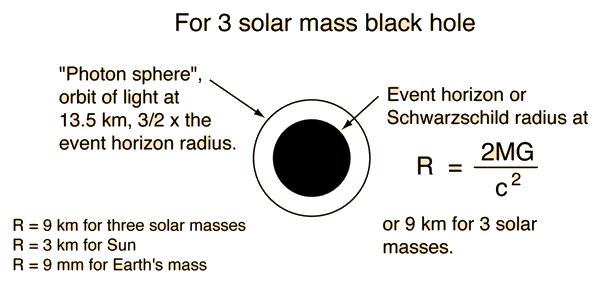Black Hole Conditions
After collapse to the neutron star stage, stars with masses less than 2-3 solar masses should remain neutron stars, gradually radiating away their energy, because there is no known mechanism for further combination, and forces between neutrons prevent further collapse. But this neutron force is the last stand, and our best calculations indicate that this repulsion which prevents collapse cannot withstand the gravity force of masses greater than 2 to 3 solar masses. Such neutron stars would collapse toward zero spatial extent - toward a "singularity". Once they collapsed past a certain radius, the "event horizon", then even light could not escape: black hole.
Since black holes by their very definition cannot be directly observed, proving their existence is difficult. The indirect evidence for the black hole Cygnus X-1 is a good example of the search for black holes.
|
Index
Black hole concepts |

